How Influential Is Lord Ernest Rutherford in the Chemistry Community?
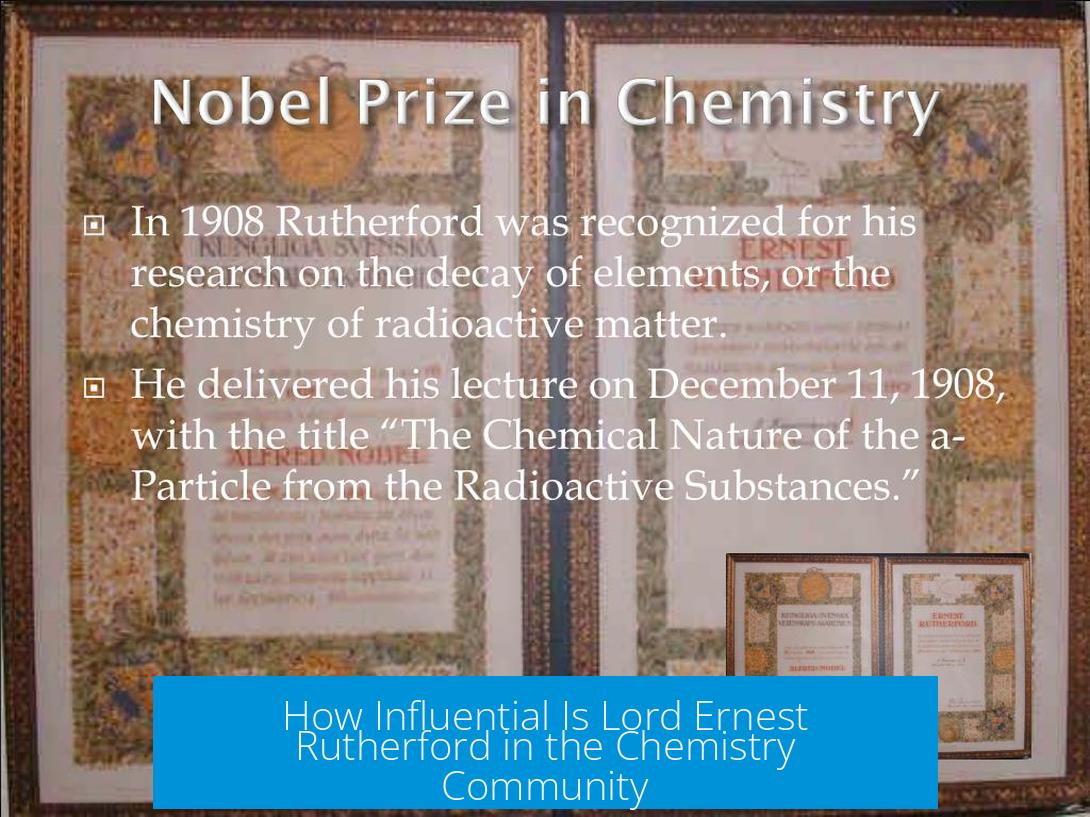
Lord Ernest Rutherford is profoundly influential in the chemistry community. His groundbreaking discoveries, especially the identification of the atomic nucleus and development of an atomic model, transformed the foundations of modern chemistry. Moreover, his legacy endures through education, mentorship, and his bridging of chemistry with physics.
Rutherford’s Recognition Within Chemistry
Rutherford stands as an iconic figure in chemistry. His name adorns element 104, known as Rutherfordium, signaling the high esteem in which the scientific community holds him. Such recognition is rare and highlights his major contributions to natural science and society.
Every chemist learns of Rutherford’s work early in their education. His discoveries are fundamental to understanding atomic structure, chemical behavior, and matter interaction. The element named after him keeps his legacy alive in the periodic table, reflecting his lasting impact.
Foundational Discoveries and Their Impact
Discovery of the Atomic Nucleus
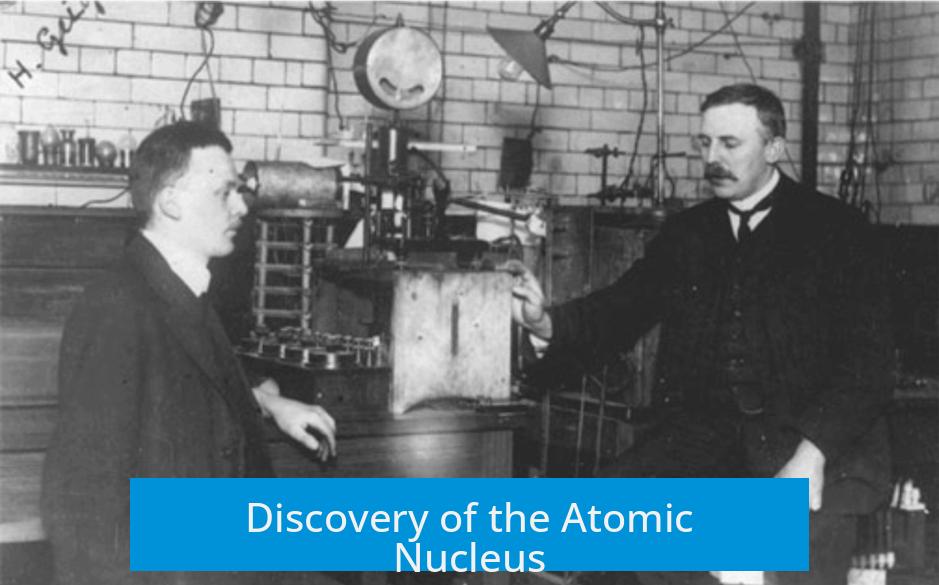
Rutherford’s most famous achievement is discovering the atomic nucleus. This finding redefined the concept of the atom from an indivisible unit to a complex structure with a dense, central core surrounded by electrons.
- The gold foil experiment revealed that most alpha particles passed straight through, while a few deflected sharply.
- This led to the conclusion that atoms contain a small, positively charged nucleus at their center.
- The core discovery reshaped chemistry, influencing how scientists view atoms and chemical reactions.
This breakthrough shifted chemistry from speculative models toward a clearer, experimentally validated atomic theory.
Atomic Model and Proton Discovery
Rutherford’s model paved the way for later developments, such as Niels Bohr’s atomic model. Rutherford himself identified the proton as a fundamental particle within the nucleus, establishing atomic number concepts tied to proton count.
His gold foil experiment is taught universally in chemistry classes. It forms a basic component of atomic theory education, demonstrating how experimental methods lead to conceptual transformations.
Experimental Innovation and Mentorship
Rutherford was not only a remarkable theorist but also an exceptional experimentalist. The design and execution of his scattering experiment in the early 20th century demonstrate extraordinary scientific ingenuity and precision for the era.
He mentored many influential scientists, including Hans Geiger, Ernest Marsden, Niels Bohr, James Chadwick, and Otto Hahn. Their achievements furthered nuclear physics and chemistry, reinforcing Rutherford’s broad influence on science and education.
Educational Influence and Legacy
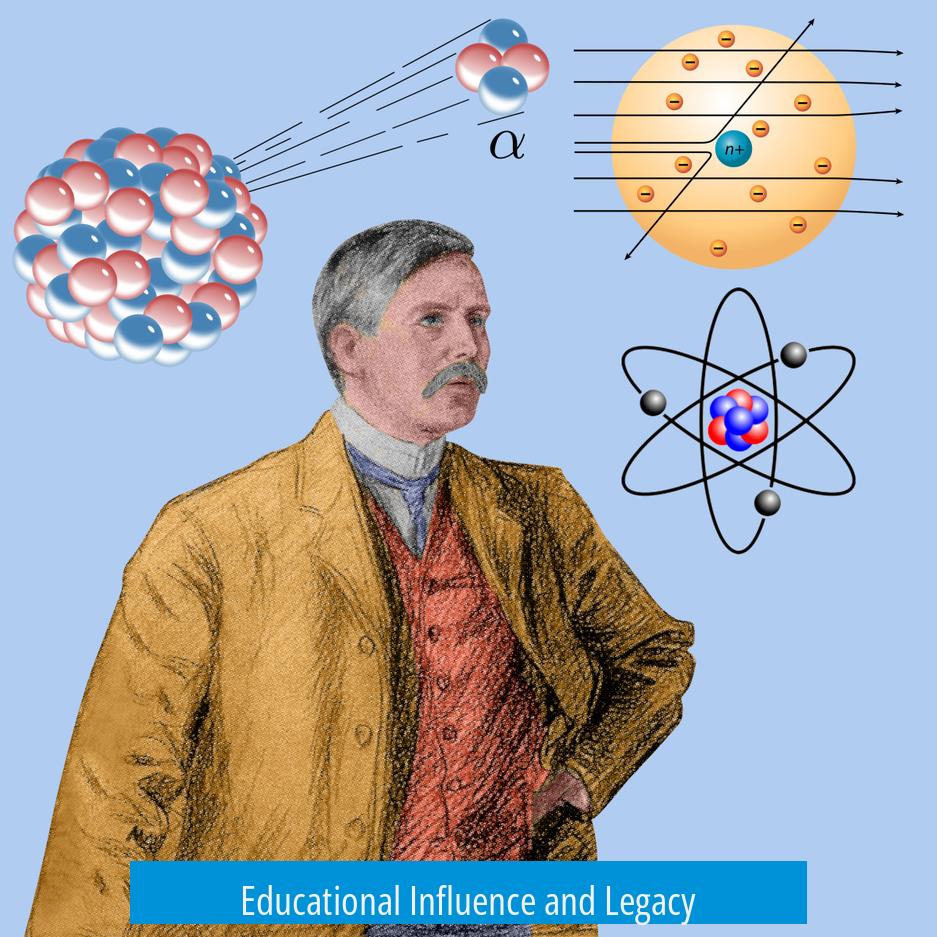
In chemistry curricula worldwide, Rutherford’s contributions form a core part of learning material. His work appears prominently in textbooks and classroom discussions, often repeated throughout schooling to emphasize foundational concepts.
Institutions recognize him beyond academics. Schools in England name “Rutherford House” in his honor. In New Zealand, his birthplace, sites like Rutherford’s Den at the University of Christchurch celebrate his memory and engage students in his scientific heritage.
Chemistry and Physics: A Bridging Role
Rutherford’s career bridges chemistry and physics. Despite joking that chemistry was “stamp collecting” compared to physics, his own research elevated chemistry by embedding fundamental physics principles into chemical science.
His work introduced a physics-based understanding of atomic structure, setting a precedent for future quantum chemistry and nuclear chemistry research.
Broader Scientific and Historical Significance
Beyond chemistry, Rutherford’s impact touches nuclear physics and historical developments. He played a part in the infancy of nuclear research, influencing projects like the Manhattan Project indirectly through his students and discoveries.
Noted author Richard Rhodes highlights Rutherford’s career in “The Making of the Atomic Bomb,” underscoring his role in nuclear science. Albert Einstein famously compared him to Isaac Newton, indicating the depth of his scientific influence.
Contemporary Perspective and Limitations
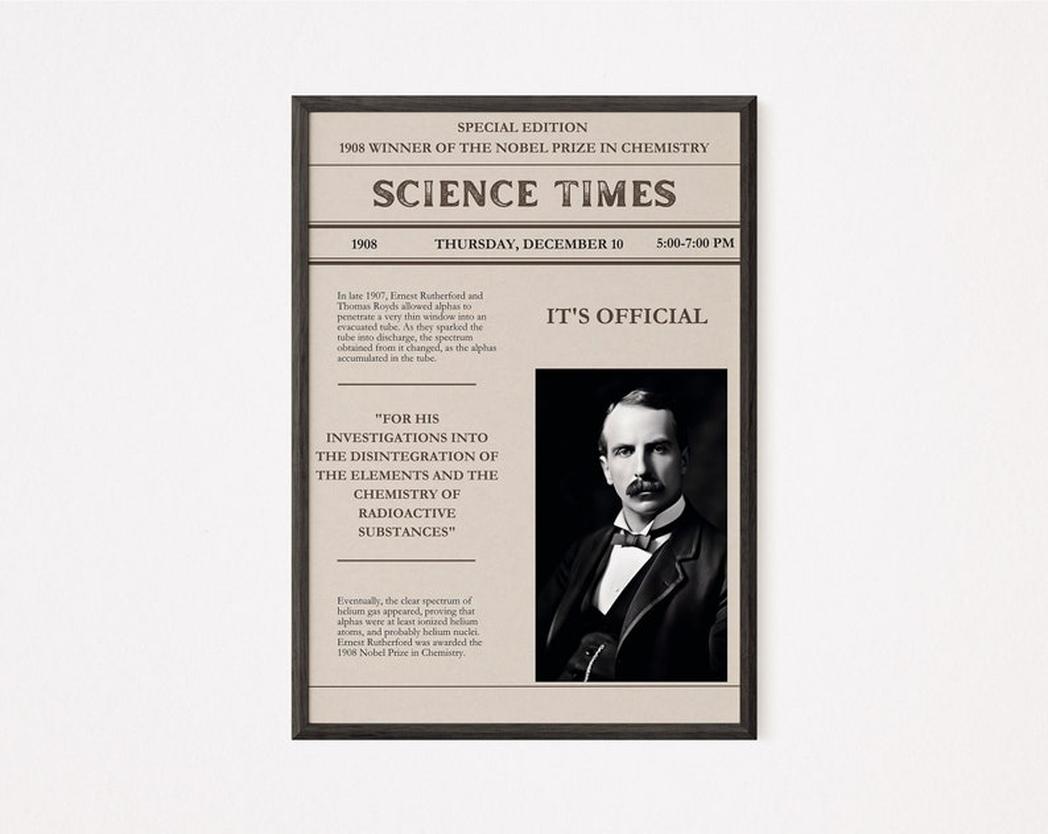
While Rutherford laid foundational theories, modern science has advanced far beyond his original models. Contemporary chemistry and physics rely on quantum mechanics and complex nuclear theories that refine and sometimes supersede his ideas.
Some argue that crediting individuals excessively risks overshadowing collaborative scientific progress. It is probable that, had Rutherford not made these discoveries, others would have shortly achieved them, reflecting broader knowledge trends in science.
Summary of Rutherford’s Influence on Chemistry
- Discovered the atomic nucleus, reshaping atomic theory and chemical understanding.
- Developed an atomic model foundational to modern chemistry education.
- Executed pioneering experimental work, notably the gold foil scattering experiment.
- Mentored key scientists who furthered nuclear physics and chemistry research.
- Bridged physics and chemistry, promoting a more theoretical and integrated scientific approach.
- Honored through the element Rutherfordium and widespread educational recognition.
- Historical influence remains strong though original scientific models have evolved.
Key Takeaways
- Rutherford fundamentally transformed atomic theory, a core piece of chemistry.
- His discoveries are central to chemistry education globally.
- He forged connections between physics and chemistry disciplines.
- His mentorship shaped prominent scientists advancing nuclear science.
- Recognition includes an element named in his honor and institutional memorials.
- Modern science builds on, but moves beyond, his pioneering work.
How Influential Is Lord Ernest Rutherford in the Chemistry Community?
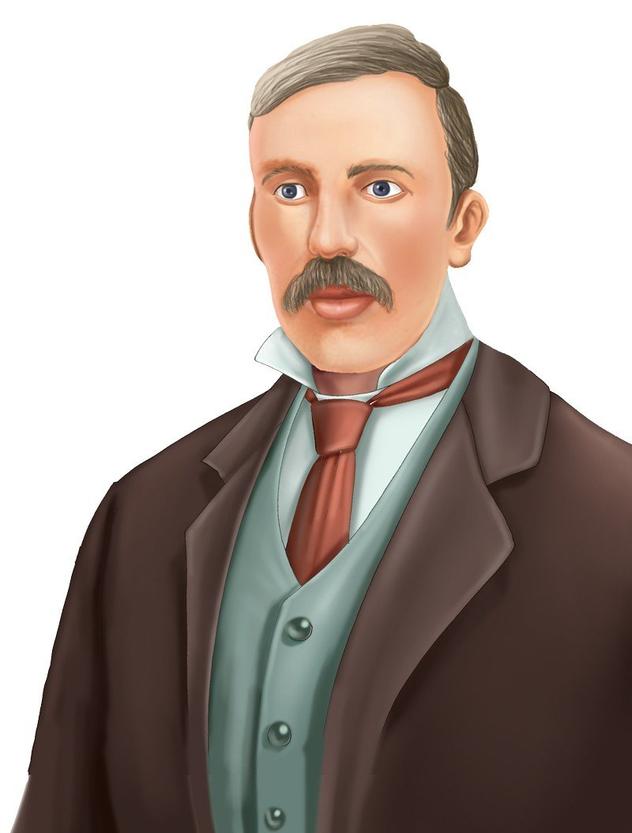
Lord Ernest Rutherford is profoundly influential in the chemistry community because he fundamentally transformed our understanding of the atom by discovering its nucleus, developing a new atomic model, and inspiring generations of chemists and physicists alike. His legacy is woven into both education and research, earning him a place of honor that few scientists achieve.
Now, let’s unpack why Rutherford stands tall in chemistry, and why his name still echoes in classrooms and labs worldwide.
What Makes Rutherford a Chemistry Giant?
First off, having an element named after you is a pretty big deal. Element 104, Rutherfordium, immortalizes his impact in the periodic table. That alone signals that Rutherford’s contributions weren’t just important—they were foundational.
But there’s far more than just a name. Rutherford didn’t just dabble in atomic theory; he discovered the atomic nucleus. Imagine that. Before his experiments, the atom was a blurry concept. He showed the atom has a tiny, dense center—a nucleus—surrounded by electrons. This shifted chemistry from vague ideas to concrete atomic structures.
The Gold Foil Experiment: Chemistry’s Plot Twist
Rutherford’s famous gold foil experiment proves he wasn’t just theorizing but doing hands-on, boundary-pushing science. By firing particles at a thin sheet of gold foil, discovering some bounced back, he challenged the then-popular “plum pudding model” of the atom. This simple experiment overturned the old model and set the stage for modern atomic theory.
This scattering experiment is still central to chemistry education—even high school teachers mention Rutherford multiple times as a key figure. It’s the kind of science story students remember: unexpected results lead to revolutionary ideas.
Atomic Model and Proton Discovery: Chemistry’s Milestones
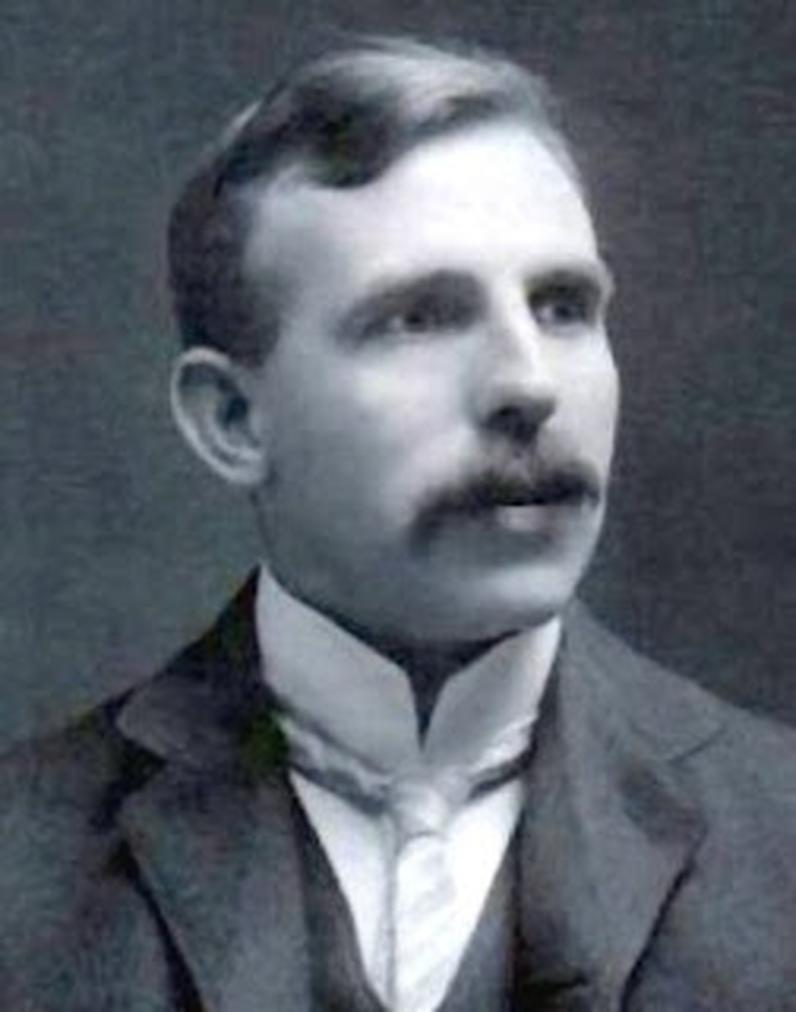
Beyond the nucleus, Rutherford identified the proton, the positively charged particle in the nucleus. This discovery led to the atomic numbering system—the number of protons defines the element—forming the backbone of the periodic table’s organization.
He also collaborated with Niels Bohr, whose atomic model built on Rutherford’s findings. Together, they shaped how chemists and physicists understand atoms, molecules, and chemical reactions today.
Beyond Chemistry: The Bridge to Physics
Interestingly, Rutherford once joked chemistry was “stamp collecting,” implying physics was the true ruler of deep understanding. Yet, his work blurred that line, pushing chemistry from descriptive to deeply theoretical. In fact, his discoveries underpin much of nuclear chemistry and physics, including nuclear reactions and radioactivity.
Despite his lighthearted jab at chemistry, Rutherford’s 1908 Nobel Prize in Chemistry underscores how pivotal he was to the field. And Einstein calling him “another Newton”? That’s as close to high praise as science gets.
Mentorship and Influence on Future Scientists
Rutherford wasn’t just a star solo act; he was a remarkable mentor. His students included luminaries like Hans Geiger, Ernest Marsden, Niels Bohr, James Chadwick, and Otto Hahn. This mentorship helped proliferate groundbreaking research that continued well past his era.
Imagine the ripple effect: his influence on the Manhattan Project and nuclear physics owes a lot to this nurturing of talent. Rutherford’s role in shaping minds was just as impactful as his personal discoveries.
Educational Legacy and Cultural Impact
Rutherford’s influence reverberates in education worldwide. His legacy is firmly embedded in chemistry curricula. In England, for example, some schools honor him by naming a student house “Rutherford House,” the only scientist among houses named for famous people. Educators in the US also emphasize his achievements in high school science classes.
If you find yourself in New Zealand, visiting Rutherford’s Den at Christchurch University offers a glimpse into his early days. It’s a humble space, but filled with history—old student graffiti on desks echoes the passage of a century filled with scientific breakthroughs inspired by Rutherford.
The Broader Scientific and Historical Picture
Rutherford’s contributions weren’t just contained within chemistry. His influence stretches to nuclear physics, helping define humanity’s understanding of nuclear reactions and elements’ behavior at the subatomic level. His role in the Manhattan Project highlights how chemistry and physics combined in world-changing science.
Yet, it’s worth noting that while his ideas set a foundation, modern science has advanced far beyond Rutherford’s initial models. His atomic nucleus discovery and scattering model are stepping stones to quantum mechanics and electron cloud theories, which now offer richer explanations.
Contemporary Views: Respect Without Excessive Worship
Some scientists caution against hero worship, noting that had Rutherford not made his discoveries, someone else would have. Science is a collaborative field, after all.
Nevertheless, his concrete experiments, creative insights, and mentorship ensure he stands out. His work transitioned chemistry from a field focused on simple classification to one grounded in atomic theory and physical principles.
Final Thoughts: Why Every Chemist Should Know Rutherford’s Story
Ernest Rutherford’s impact on chemistry isn’t just a historical footnote; it’s a constant in modern science education and practice. His discovery of the atomic nucleus changed how we see matter. His proton discovery explained elemental identity. His gold foil experiment revolutionized atomic theory.
He straddled physics and chemistry, elevating the latter to new theoretical heights. He taught and inspired a generation of scientists who further transformed natural science. His name lives on, from the periodic table to classrooms across the globe.
Next time you open a chemistry book or hear about atomic structure, remember Rutherford—not just as a name, but as a trailblazer who helped sculpt the roadmap of chemistry as we know it.
“Rutherford is a name every chemist should know and quite a bit of his discoveries were fundamental for natural science and society in general.”
So, how influential is Lord Ernest Rutherford in the chemistry community? Very influential indeed.
What was Lord Ernest Rutherford’s key contribution to chemistry?
He discovered the atomic nucleus, showing atoms have a small, dense center. This reshaped how chemists understand atomic structure and chemical reactions.
How does Rutherford’s work affect chemistry education today?
His experiments, especially the gold foil scattering, are core topics in chemistry classes worldwide. Students learn about his atomic model and proton discovery regularly.
Did Rutherford influence other scientists in the chemistry community?
Yes, he mentored notable figures like Bohr, Chadwick, and Hahn. His guidance helped develop modern nuclear physics and chemistry.
Why is Rutherford honored with an element named after him?
This recognition celebrates his fundamental discoveries in atomic structure and nuclear chemistry, marking his lasting impact on science.
How did Rutherford’s work bridge chemistry and physics?
He moved chemistry beyond simple observation, connecting it with deep physical principles. Despite his joke about chemistry, his work built a foundation for nuclear science.
Are Rutherford’s scientific ideas still used in modern chemistry?
His core ideas laid the foundation, but science has advanced. While superseded, his discoveries remain important historically and in teaching basic atomic concepts.


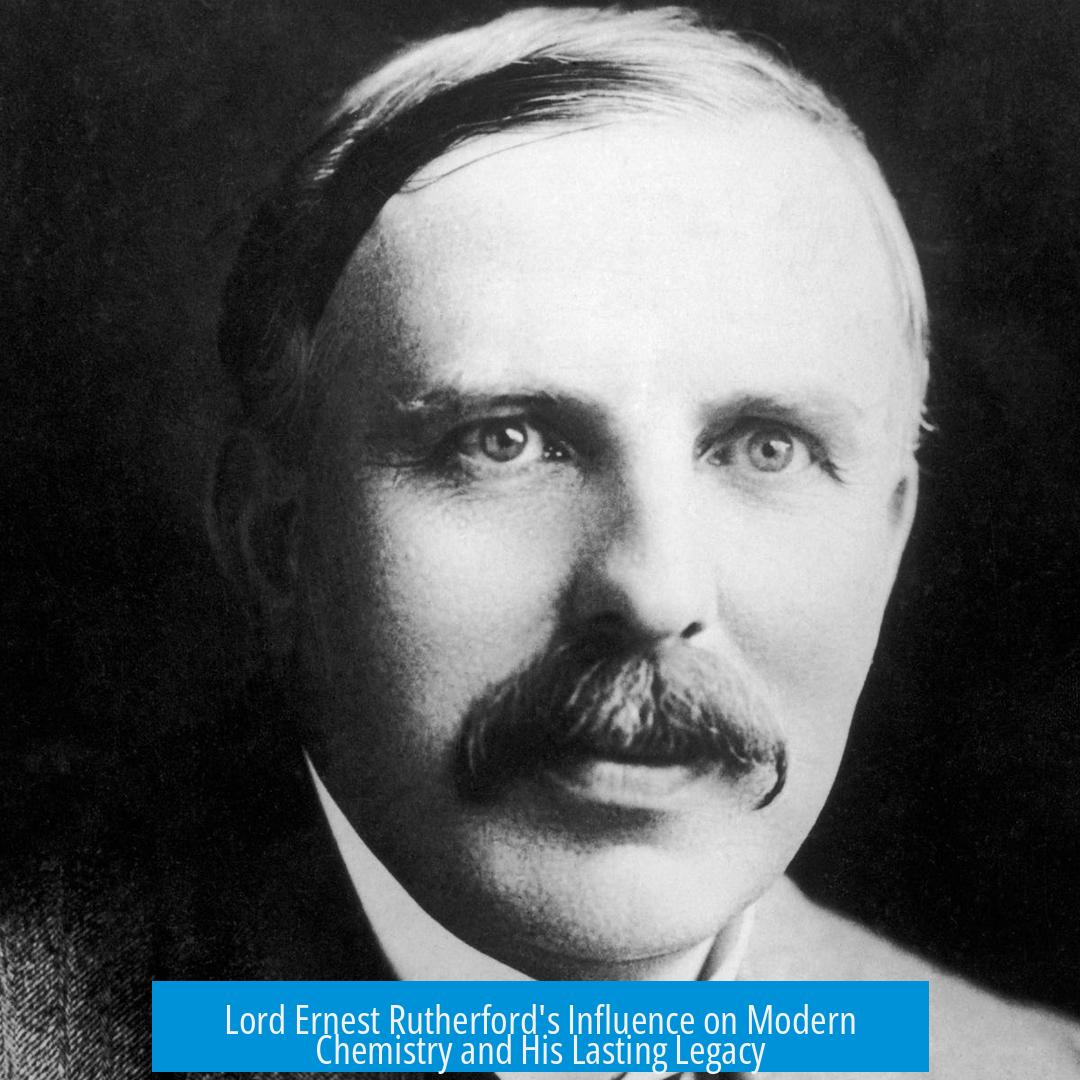


Leave a Comment